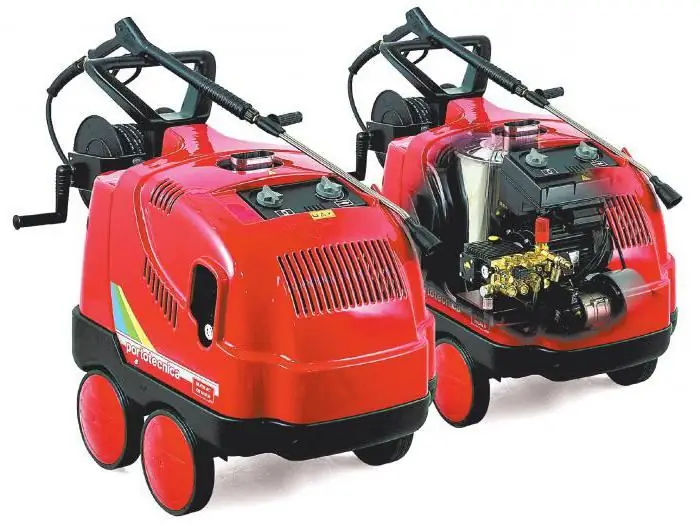2026 Author: Howard Calhoun | [email protected]. Last modified: 2025-01-24 13:10:31
Spontaneous loosening of threaded connections entails the risk of premature failure of a wide variety of machines and mechanisms. Grover's washer is quite effective in preventing this undesirable phenomenon, but it has its drawbacks. Firstly, this is an extra assembly unit, and secondly, they can simply forget to put it in place during the next disassembly.

How to do without Grover's puck
The old way is to screw on a locknut, that is, another nut wrapped on top of the main one. This method is effective, but not always applicable, especially in cases where the weight of the machine or mechanism is important, for example, in aviation or space and rocket technology.
In order to improve the performance of products in almost all branches of engineering, they came up with self-locking nuts, that is, those that do not care about vibration and other mechanical vibrations.
There are several ways to achieve this result.

Different types of self-locking nuts
The first method to improve the stability of a threaded connection is to make mounting parts in such a way that self-locking nuts experience elastic deformations on the turns during screwing, which is ensured by the so-called "preload", that is, a positive tolerance that provides increased friction during tightening.
Similar deformations can also be achieved with multi-step cutting of a nut and a bolt. With each subsequent turn, this difference will increase the force required to disassemble the knot, which will eliminate arbitrary self-unscrewing.

There is also a self-locking nut with a nylon ring, through which mechanical braking of any of their strokes after screwing is carried out. The elastic polymer insert also plays the role of an additional damper, that is, a damper of mechanical vibrations, which also has a positive effect on the reliability of the threaded connection.
Means for solving the problem is also a thickening in the lower part with a special notch that creates increased friction after it is pressed against the surface of the fixed part. These self-locking nuts are easy to recognize, they differ significantly in appearance from their usual hex counterparts.
Original solutions

There are other ways to prevent unwanted and untimely unscrewing. For connections that do not experience significant mechanical loads during operation,use self-locking nuts stamped from sheet steel, creating increased resistance during reverse travel due to the springy properties of the material of manufacture.
It is also possible to use additional gear rims fixed at the bottom of the fastener. By increasing friction at the points of contact, the protrusions securely fix its position.
Despite the variety of forms, any fastener is produced according to national and international standards, including the self-locking nut. GOST 5915-70 and DIN 985 are documents regulating their size (and they come with metric and inch threads) and material (plain, alloy or stainless steel).
Recommended:
How self-tapping screws are made at the factory: technologies and equipment. Machine for the production of self-tapping screws

How are self-tapping screws made at the factory? The answer to this question is a fairly simple technique. At the enterprises, blanks with hats are first made from steel wire. Further, threads are cut on such blanks
Self-presentation: about yourself briefly and beautifully. Creative and beautiful self-presentation of the teacher

Today, presenting yourself to others is a daily necessity for each of us. Sometimes our partners are serious business people, sometimes they are casual acquaintances, but regardless of professions and age, we all would like to make only a positive impression
Where can I get a loan in Omsk without refusal and without references?

Getting a loan in Omsk will not be difficult for any borrower with a positive credit history. But, unfortunately, not everyone has it. Which bank should I contact to get a loan with a bad credit history and without references in Omsk?
Where to get a loan without refusal, without references and guarantors

Where can I get a loan without refusal? This issue is of interest to a huge number of citizens of our country. Some of them have the opportunity to get a loan from an ordinary bank, while the rest, for one reason or another, cannot do this. Perhaps the age limit set by most banks is to blame, or the need to provide official papers confirming employment or income (and it is very difficult for those working unofficially to do this)
High pressure washers "Portotechnika": characteristics, reviews

The design provides indicators for low fuel pressure and antiscale in the tank, which allows you to control the process, eliminating wear and tear of parts and extending the life of the sink. Before making the final choice, you should read the overview of the high-pressure washer "Portotechnika"

